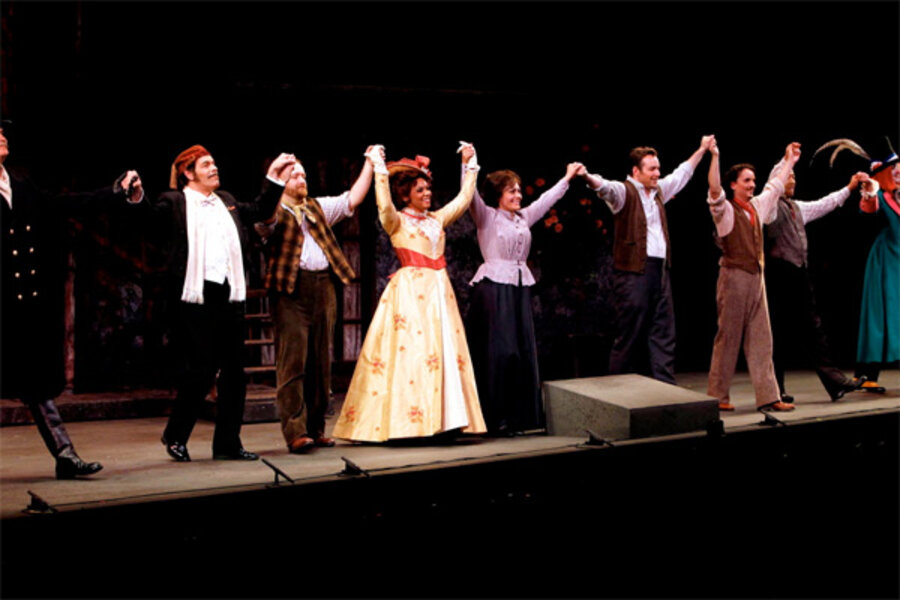'Follies' and 'La Boheme' take Los Angeles by storm
Loading...
The elegant Los Angeles Opera production of the consummate classic “La Boheme,” anchoring one end of the downtown Los Angeles Music Center, is matched at the far end by a classic in the making, the sumptuous and much-lauded revival of Stephen Sondheim’s 1971 groundbreaking “Follies.”
The yin-yang contrast of these two vibrant musical events throws a neat spotlight on both the forces that keep a chestnut fresh and the challenges facing a work that is only belatedly being recognized as a theater landmark.
Both shows are constructed around the trials of two couples in the throes of passion and inevitability. In La Boheme, of course, Mimi’s impending death becomes the engine for Giacomo Puccini’s rhapsodically romantic melodies, tunes that have left audiences humming for more than a century. In the case of Sondheim’s angst-filled duos, the clash of adult reality falling short of youthful dreams becomes the setting for two hours of what many at its debut thought was the demise of the American musical.
As Los Angeles Times critic Charles McNulty put it, many initially said musical theater had been hijacked by Eugene O’Neill after viewing the dyspeptic, snarky and often laugh-out-loud hilarity of 20th century realism exploding the expectations of song-filled love affairs. The song “Could I Leave You?” may be one of the most satisfying deconstructions of a broken marriage in the musical theater. This production launched last year in Washington, played on Broadway and has been nominated for eight Tony awards, including Best Revival.
Real-life husband and wife team Stephen Costello and Ailyn Perez – dubbed the fastest-rising husband and wife opera team – sing the star roles in the Puccini work, itself a rethinking created by film director Herbert Ross.
Both works spotlight the factors that keep an established classic fresh and allow a new classic to emerge. The story of the dying Parisian seamstress nearly always teeters on the verge of parody, it is so well-loved and referenced. Yet, in this production, the hot young stars bring a verve and youthful vigor to the roles that make you believe all over again, although it should be noted that this is done without a shade of irony. This is a traditional yet compelling rendition of the chestnut and audiences were breathless in their bravo, bravoing. On the other hand, the Sondheim work, with its 41-member cast and 28-member live orchestra -- nearly the largest to ever grace the Ahmanson’s capacious stage -- as well as multiple dance numbers and fantastic costumes, is a work that is only belatedly taking its place in the annals of music theater history as a seminal masterwork.
This is due in part to the complicated, moody music and lyrics, but in no small part to the sheer size of the production. TV’s "Glee," with its delicious ironic take on the musical form, may certainly owe at least a wink to Sondheim – and the budgeting power of a broadcast network is nearly what it takes to mount a show this ambitious. This is not a show for the faint-hearted to undertake. And yet, for a work to take its rightful place as a classic, this full-throated, pedal-to-the-metal production is what it requires.
Many in the theater lobby at intermission commented that they had never seen a production of the show before. Critics have nearly universally applauded moving Sondheim’s early work that much closer to its rightful place in theater history, at the same time noting that in these hard times for arts groups everywhere, this kind of serious yet ravishingly entertaining theater is harder than ever to find.







